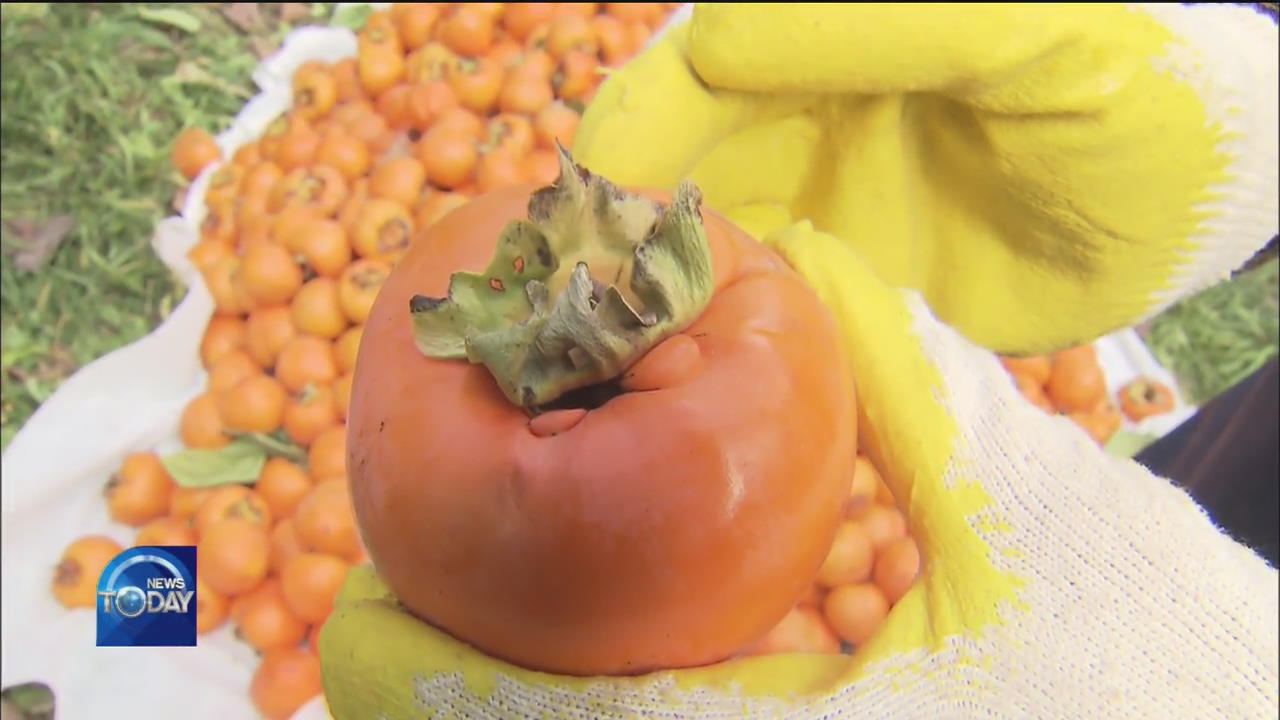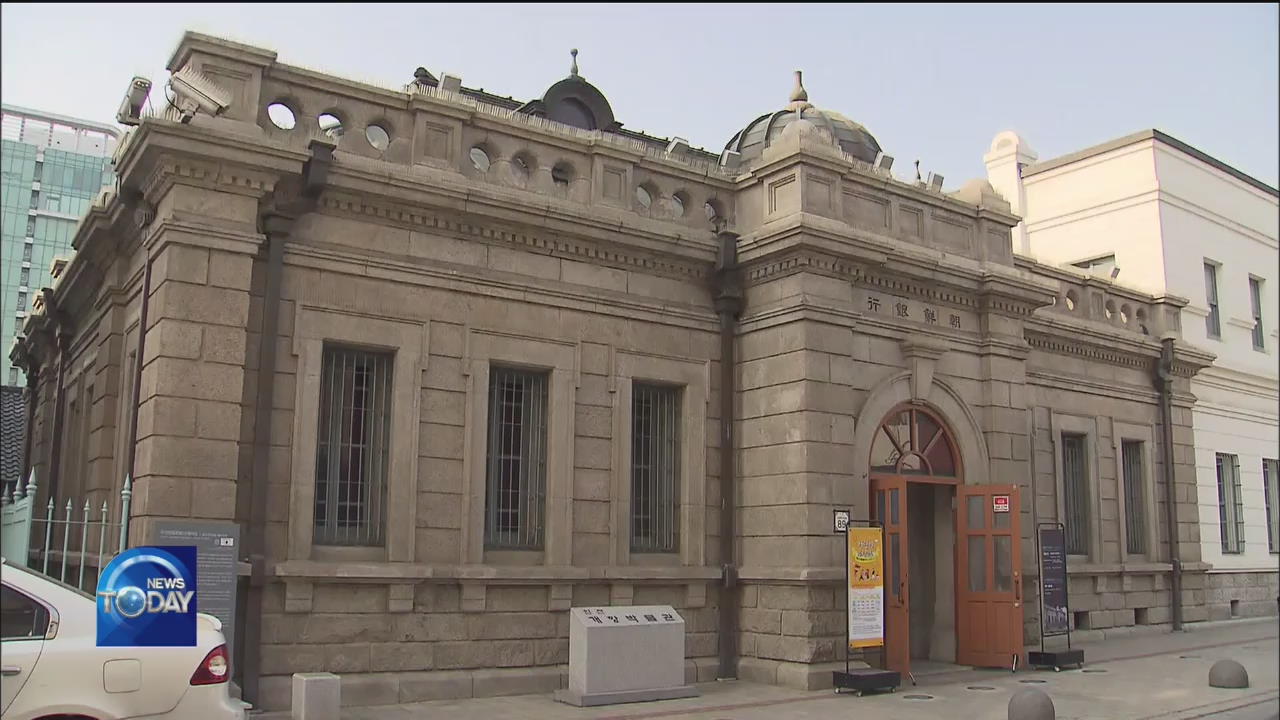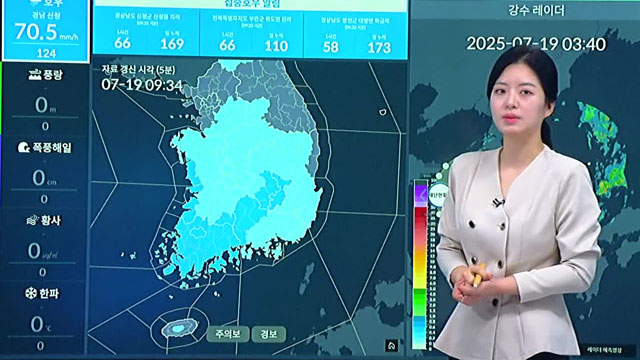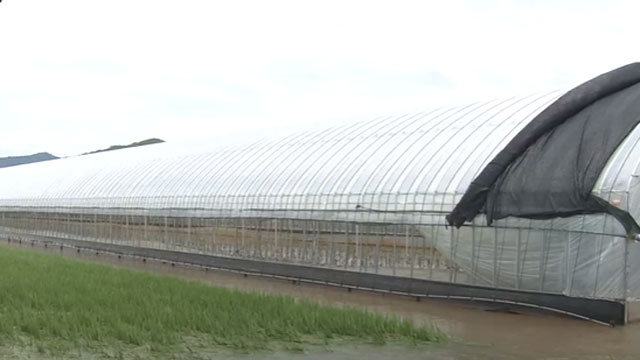TYPHOON'S AFFECT ON PERSIMMON HARVESTING
입력 2019.11.05 (15:04)
수정 2019.11.05 (16:45)
읽어주기 기능은 크롬기반의
브라우저에서만 사용하실 수 있습니다.
[Anchor Lead]
Dried persimmon harvested in the pristine environment of Jirisan Mountain is a famous winter delicacy. But this year, farmers are worried as frequent typhoons and the unseasonably warm autumn may have affected their produce.
[Pkg]
The harvest of persimmons is well under way at a farm on the foot of Mount Jirisan. This particular persimmon is named after King Gojong as it was presented to the king due to its high sweetness. Overall harvest this year is not bad, but farmers are still concerned. A closer look unveils the top end of the fruit has cracked, making the inside flesh soggy and runny. This is the side effect of heavy downpours brought upon by many typhoons this year in this area. The harvest volume has increased this year but nearly half the fruits have defects.
[Soundbite] JO HYEONG-SEOB(DRIED PERSIMMON FARMER) : "The weather wasn't very good this year. The stem is not securely attached to the fruit because of the rain."
Lunar New Year comes earlier next year compared to past years and there's concern persimmons may not be ready to hit the market before the holiday. To make dried persimmons, which are called 'gotgam' in Korean, the fruit needs to be frozen and thawed repeatedly in daytime temperatures of below 8 degrees Celsius for over 40 to 50 days. But the drying process hasn't even begun yet as this fall has been especially warm.
[Soundbite] GANG BYEONG-GYU(SANCHEONG AGRICULTURAL COOPERATIVE) : "The weather that follows after the persimmons are peeled will be the most critical. The fruit won't dry well in rain or under cloudy skies."
Typhoons and the warm fall weather have been a source of distress for farms producing the sweet dried fruit snack.
Dried persimmon harvested in the pristine environment of Jirisan Mountain is a famous winter delicacy. But this year, farmers are worried as frequent typhoons and the unseasonably warm autumn may have affected their produce.
[Pkg]
The harvest of persimmons is well under way at a farm on the foot of Mount Jirisan. This particular persimmon is named after King Gojong as it was presented to the king due to its high sweetness. Overall harvest this year is not bad, but farmers are still concerned. A closer look unveils the top end of the fruit has cracked, making the inside flesh soggy and runny. This is the side effect of heavy downpours brought upon by many typhoons this year in this area. The harvest volume has increased this year but nearly half the fruits have defects.
[Soundbite] JO HYEONG-SEOB(DRIED PERSIMMON FARMER) : "The weather wasn't very good this year. The stem is not securely attached to the fruit because of the rain."
Lunar New Year comes earlier next year compared to past years and there's concern persimmons may not be ready to hit the market before the holiday. To make dried persimmons, which are called 'gotgam' in Korean, the fruit needs to be frozen and thawed repeatedly in daytime temperatures of below 8 degrees Celsius for over 40 to 50 days. But the drying process hasn't even begun yet as this fall has been especially warm.
[Soundbite] GANG BYEONG-GYU(SANCHEONG AGRICULTURAL COOPERATIVE) : "The weather that follows after the persimmons are peeled will be the most critical. The fruit won't dry well in rain or under cloudy skies."
Typhoons and the warm fall weather have been a source of distress for farms producing the sweet dried fruit snack.
■ 제보하기
▷ 카카오톡 : 'KBS제보' 검색, 채널 추가
▷ 전화 : 02-781-1234, 4444
▷ 이메일 : kbs1234@kbs.co.kr
▷ 유튜브, 네이버, 카카오에서도 KBS뉴스를 구독해주세요!
- TYPHOON'S AFFECT ON PERSIMMON HARVESTING
-
- 입력 2019-11-05 15:11:55
- 수정2019-11-05 16:45:19

[Anchor Lead]
Dried persimmon harvested in the pristine environment of Jirisan Mountain is a famous winter delicacy. But this year, farmers are worried as frequent typhoons and the unseasonably warm autumn may have affected their produce.
[Pkg]
The harvest of persimmons is well under way at a farm on the foot of Mount Jirisan. This particular persimmon is named after King Gojong as it was presented to the king due to its high sweetness. Overall harvest this year is not bad, but farmers are still concerned. A closer look unveils the top end of the fruit has cracked, making the inside flesh soggy and runny. This is the side effect of heavy downpours brought upon by many typhoons this year in this area. The harvest volume has increased this year but nearly half the fruits have defects.
[Soundbite] JO HYEONG-SEOB(DRIED PERSIMMON FARMER) : "The weather wasn't very good this year. The stem is not securely attached to the fruit because of the rain."
Lunar New Year comes earlier next year compared to past years and there's concern persimmons may not be ready to hit the market before the holiday. To make dried persimmons, which are called 'gotgam' in Korean, the fruit needs to be frozen and thawed repeatedly in daytime temperatures of below 8 degrees Celsius for over 40 to 50 days. But the drying process hasn't even begun yet as this fall has been especially warm.
[Soundbite] GANG BYEONG-GYU(SANCHEONG AGRICULTURAL COOPERATIVE) : "The weather that follows after the persimmons are peeled will be the most critical. The fruit won't dry well in rain or under cloudy skies."
Typhoons and the warm fall weather have been a source of distress for farms producing the sweet dried fruit snack.
Dried persimmon harvested in the pristine environment of Jirisan Mountain is a famous winter delicacy. But this year, farmers are worried as frequent typhoons and the unseasonably warm autumn may have affected their produce.
[Pkg]
The harvest of persimmons is well under way at a farm on the foot of Mount Jirisan. This particular persimmon is named after King Gojong as it was presented to the king due to its high sweetness. Overall harvest this year is not bad, but farmers are still concerned. A closer look unveils the top end of the fruit has cracked, making the inside flesh soggy and runny. This is the side effect of heavy downpours brought upon by many typhoons this year in this area. The harvest volume has increased this year but nearly half the fruits have defects.
[Soundbite] JO HYEONG-SEOB(DRIED PERSIMMON FARMER) : "The weather wasn't very good this year. The stem is not securely attached to the fruit because of the rain."
Lunar New Year comes earlier next year compared to past years and there's concern persimmons may not be ready to hit the market before the holiday. To make dried persimmons, which are called 'gotgam' in Korean, the fruit needs to be frozen and thawed repeatedly in daytime temperatures of below 8 degrees Celsius for over 40 to 50 days. But the drying process hasn't even begun yet as this fall has been especially warm.
[Soundbite] GANG BYEONG-GYU(SANCHEONG AGRICULTURAL COOPERATIVE) : "The weather that follows after the persimmons are peeled will be the most critical. The fruit won't dry well in rain or under cloudy skies."
Typhoons and the warm fall weather have been a source of distress for farms producing the sweet dried fruit snack.
이 기사가 좋으셨다면
-
좋아요
0
-
응원해요
0
-
후속 원해요
0

















이 기사에 대한 의견을 남겨주세요.